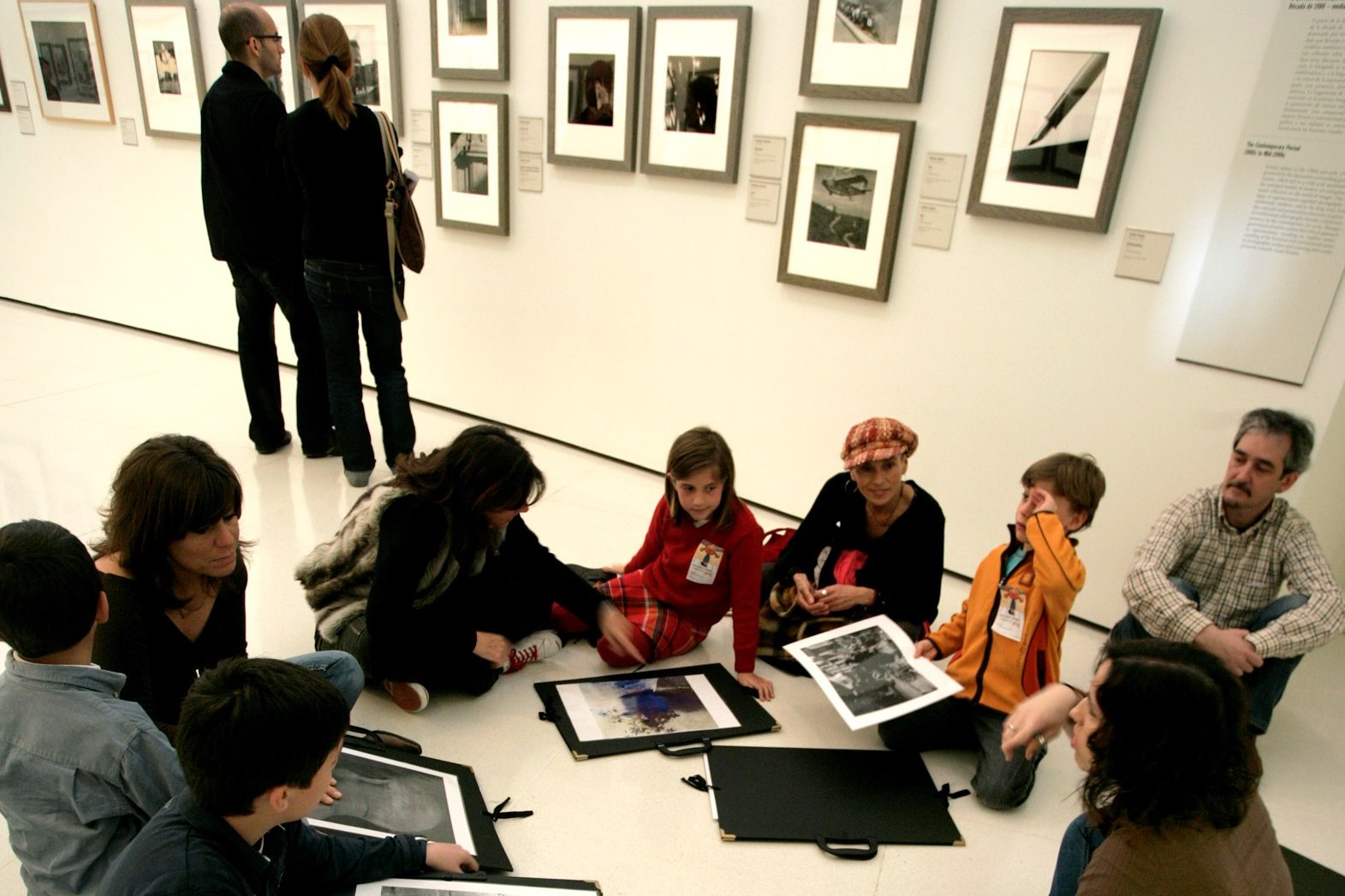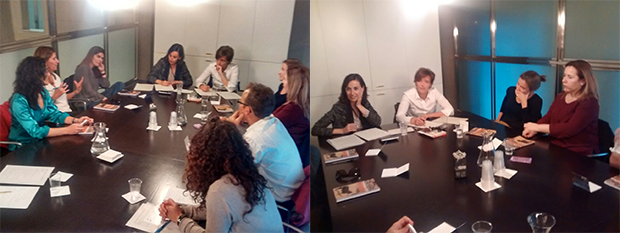Emma Vandellós

When I became responsible for the Area of Brand and Development of the Museum in March 2016, which forms part of the Department of Marketing and Communication, one of the first questions I asked was: do we really know what our visitors want? And the answer was no.
Many times we define marketing strategies and policies seated in our offices without listening to what our users want and the result is only wasted money. The only way to find out what our visitors really want is to ask them.
In this way, the idea of organising focus groups emerged in the museum with the aim of sitting down next to the visitors and asking them first-hand how their experience could be improved in our museum.
The mechanics of the Focus groups
Doing a focus group consists of gathering together a group of people so as to openly discuss about a certain topic. It is one of the ways of getting to know qualitative opinions and attitudes of the public. It allows you to obtain a large amount of information as a result of the interaction of different viewpoints in which the individual dimension (the perspective of each member of the group) is combined with the social dimension (the group phenomenon).
Focus groups can be used to get information about a certain field that you don’t know a lot about, to make an in-depth study about the needs, motivations and barriers to purchasing, behaviours, attitudes, opinions, beliefs or habits, identifying new concepts of products/services and even to narrow down research goals.
The group is led by a moderator and is normally made up of between 8 and 10 people. The moderator establishes the bases of the dialogue based on an initial script which should serve to focus the discussion topics. It is recommended that the list isn’t just a succession of closed questions with yes/no answers, but it should be a list of topics that lead to an open dialogue in which the participants can express their ideas and opinions with total freedom.
When defining the profile of the individuals who should make up the group, it is recommended that:
- groups are made up of participants who don’t know each other and don’t belong to circles close to the theme of the study.
- homogeneous groups should be formed who can speak a common language. In this sense homogeneity should be sought in terms of age, educational level, variable of use or consumption – frequency of consumption, intensity, disposition towards a brand, etc.
- expert attendees with multiple dynamics should be avoided. That’s why a period is recommended of between 6 and 12 months since the last event in which they took part.
Segmentation of the groups in the Museu Nacional
In the case of the Museu Nacional we first did a demographic segmentation obtaining 4 groups differentiated by age: families with children, youths, adults and the elderly, and at the same time within each of the 4 segments we decided that we should differentiate between those who were frequent users and those who were not habitual in the art museums, given that we identified the fact that the ones who were habitual spoke a different language to those who were not.
With the aim, therefore, of improving the visitor experience that we had proposed achieving, we didn’t doubt incorporating in the project the Departments of Mediation and Cultural Programming and SR (Social Responsibility) and Project Coordination that are key in the definition of the project or service and in the way these are provided for the visitor.
This multidisciplinary vision served for adding two more groups with a lot to say about the visitor experience in the museum: educators and visitor services staff. In this last group we included people who carry out the task in the hall of the museum, in the galleries, at the reception desk, who are the ones that are closer to the visitor.
The following step consisted of defining adapted scripts for the carrying out of each focus group. With the help of the above-mentioned departments, we defined the scripts for the following groups:
- habitual families
- non-habitual families
- habitual youths
- non-habitual youths
- habitual adults
- non-habitual adults
- educators
- visitor services staff
The next challenge was to carry out a Call for between 8 and 10 people from each group for them to come to the museum to openly speak about their experiences in the art museums. This was the most complicated stage.
The most common thing, if it’s possible to dedicate part of the budget, is to commission market research companies with the organization of the focus groups, for defining the scripts, for providing professional moderators (psychologists, sociologists, experts in communication) and to charge them with configuring the groups of participants. In our case, as we didn’t have any budget allocated, we started to do everything from the Marketing department and as we saw that we wouldn’t manage to get enough people, we asked for the help of colleagues. Thus we were able to form these groups and between the months of March to June 2016, 8 group meetings were held in the museum.
It was a very enriching experience getting to know first-hand the likes and concerns of the visitors. We found out how the habitual and non-habitual visitors prepared, or not, their visit to the museum, where they searched for information, for what reasons they decided on not going to an art museum and how we could turn ourselves into a real option of leisure when they searched for alternative things to do in their leisure time.
Family audience
From each of the 8 focus groups carried out, we reached conclusions and we defined an action plan to be carried out for each segment. For example, in the case of the family segment, it is worth highlighting as a relevant conclusion the fact that, contrary to what we might think, the location of our museum -up in the hill of Montjuïc- is a positive factor, given that it allows the visit to the collections to be combined with enjoying some time in the open air, or, on the other hand, that the encyclopaedic character of the museum can represent a barrier for the families who could see the Museu Nacional as something too big and difficult to take in.
Another interesting conclusion is that this is a segment more sensitive to the factor of time than others. For families time is a key factor when planning. If they don’t find the information about the museum quickly, they go to another website. Another conclusion worth highlighting is that the families value the fact that their children go away with something to remember that helps them to make their visit more tangible.
Based on these and other conclusions, we have got down to defining the improvements of the services and activities to offer to the families. We are currently working with Public Programmes to be able to offer a new family programming in 2017, and a series of improvements so that the families feel part of the museum, and feel at home, and in this way the Museu Nacional d’Art de Catalunya ends up becoming a habitual place for the family audiences.
We would like to thank everyone who has collaborated in the carrying out of these focus groups, both the internal team, as well as and above all, to each of the participants who selflessly came to the museum and dedicated their time to giving us their sincere and enriching opinion about how the visitor experience could be improved in the art museums and in particular in ours.
Would you like to share any visitor experience to museums? Do you have any suggestions about the services and programmes that you would like to find in the Museu Nacional? We would appreciate it if you could leave your comments below.
Marca i desenvolupament










